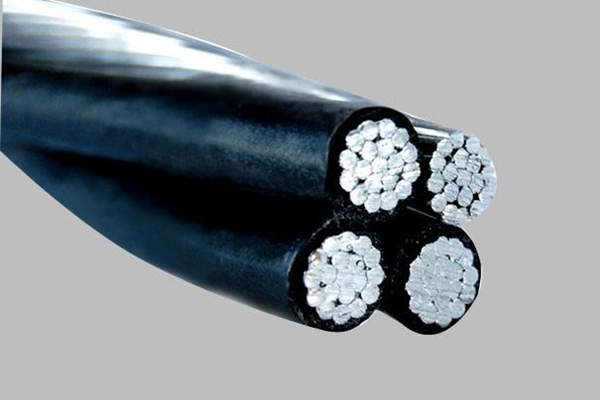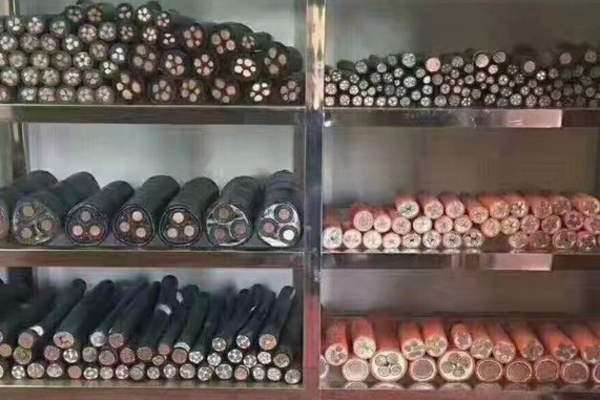An Overhead insulated cable is a cable made of special structural material with an outer sheath.
Its insulation layer is affected by the external environment during line operation, such as temperature, humidity, and other factors that can cause certain deformation or aging of the cable, resulting in certain defects.
And in the normal operation process, due to the conductor to withstand the influence of external environmental factors and its maintenance, its external state can be maintained for some time.
Therefore, it is necessary to take measures during cable operation to ensure its good working condition and safe operation.

As a special and economical power transmission cable, overhead insulated cables have different characteristics from conventional cables. Overhead insulated cables can be delivered directly to the line without the need to lay overhead lines. The mechanical properties of overhead insulated cables deteriorate as they are used over time and affect their service life.
As the temperature rises, the mechanical properties improve. Long-term operation in the harsh environment of the power transmission system (such as urban substations, important lines, etc.) has its outstanding advantages: can effectively protect the equipment from high ambient temperature, high humidity, ultraviolet radiation, and other harsh environmental impact and a variety of mechanical damage.
Effectively reduce the probability of insulation failure.
It also can effectively extend the cable life. For some special environments, overhead insulated cables can be operated simultaneously with conventional cables.
To avoid line outage faults to users causing secondary outage losses and unnecessary economic losses, the overhead insulated cable can also be mixed with conventional wires and cables or used at the same frequency and is not affected by the line load.
The advantages of overhead cables as transmission lines
(1) Reduce the rate of fault tripping
Because not laid overhead line, so use of aerial insulation after laying, the line current is not affected by load and temperature changes, and the insulation of the wire is not broken so that the circuit breaker is tripped.
Overhead insulation in not laying usually does not occur when the insulation fails. In addition, because it does not have a fixed structure and metal shell, so once a fault occurs may cause the surrounding environment current to increase, resulting in tripping.
Therefore, more than two methods can be used to prevent fault tripping.
On the one hand, metal protection tubes are laid at the tap changers of larger capacity overhead cables, or tap points are opened in the cables.
On the other hand, an adjustable load-switching device (e.g. load switch) is used to control the system.
Once the device operates, faults with low voltage level requirements can be automatically cut off from the circuit by manual action or automatic shutdown of the device. In a period before the fault trips, the residual current of the circuit breaker is the maximum flow and the current amplitude is a small and rapid action. Therefore, you can use it to reduce the residual current of the circuit breaker to control the fault tripping and reduce the number of circuit breaker outages. For example, the residual current value of a line breaker is about 1 A when the number of discharges on the breaker does not exceed 2 times.
(2) to avoid cable fault tripping
According to years of operating experience, the insulation resistance of aerial insulated cables generally varies between a few hundred to a few thousand ohms (determined by the test). The frequency of electrical fault tripping increases when the voltage and current increase. Therefore, the change in voltage and current between the cables should be minimized.
In addition, if a cable fault trip occurs, it should not be calculated from the cable fault trip time. Should be calculated from the cable fault trip signal from the time of calculation, and take into account the cause of the fault, the surrounding environment, and other factors for analysis and comparison. From the test analysis, abnormal tripping occurs when the grid load is too large.
When the grid load is too small, the frequency of the fault-tripping phenomenon decreases. This is because the line resistance and voltage increase when the grid load increases. This usually puts the system at risk when the line goes out of service.
And in daily operations, there are often too long wire distances, poor insulation contact between wires, serious defects in the wire, insulation aging, and other conditions of fault tripping.
Therefore, to reduce the loss caused by fault tripping to users and improve the reliability of the power supply, we should take corresponding measures according to the specific situation to reduce the frequency of equipment fault tripping.
(3) Effectively prevent and reduce the impact of insulation faults
According to incomplete statistics, nearly half of the world’s power failure is caused by conductor insulation failure. Therefore, the choice of appropriate performance, safe and reliable conductors, and insulation materials is very important.
Modern electricity equipment is a wide range of different types, and its structure and operating environment are not the same. Therefore, line design and operation, need to take into account the requirements of the surrounding environment and operating conditions and the traditional laying method.
The traditional way of laying that is laying the line and then erecting the wire or increasing the wire while laying with overhead insulation is laying the wire with insulation.
Both have insulation breakage, local overheating, insulation aging, and other serious consequences. In the event of a fault in operation, such as insulation breakage, it will lead to the failure of the insulation of the entire line and cause serious damage to the person and equipment.
The use of overhead insulation does not require the laying of aerial insulated cables to the line for maintenance, which can effectively reduce the probability of insulation failure. This approach should also be fully considered when conducting various insulation tests and evaluations.
From the actual operation, the requirements for overhead insulation environmental conditions are relatively low. This approach can be used for testing if the existing transformer capacity configuration can be fully utilized (if available) or if the current transformer capacity is insufficient.
Because of the current “DC Distribution System Operation Regulations” (GB/T4237.1-2005) issued by the State Grid Corporation, it is almost impossible to complete the test using this method.

(4) Ability to reduce the wear and tear of the cable during use
As the life of the overhead insulated cable increases, the resistance of the cable to the external environment will weaken.
At the same time, the cable is susceptible to damage during production due to increased mechanical wear and tear. And in high temperatures, high humidity, and various climatic conditions, the equipment in the power system will also be subject to corrosion and aging of equipment materials or insulators due to long-term work.
Thus, the cable itself and the external environment are subject to a certain degree of wear and tear. Therefore, the use of overhead insulated cables can effectively reduce the problem of cable wear and tear. For overhead lines, the internal structure is relatively simple because they are directly connected to the cable line.
However, due to its longer outer sheath and higher mechanical strength as well as good insulation performance, the following issues should be noted in actual use.
a. Use fixed brackets, hangers, and other forms of laying to keep the cable fixed and the cable sheath unchanged (including the external sheath rubber), without increasing the operational load of the cable.
b. Overhead insulated wire should not be run for a long time in outdoor or wet and rainy conditions.
c. Prohibit the use of overhead lines with the same frequency laying and other methods. Because overhead insulated wires are usually made of low-loss materials, they have a low degree of mechanical wear and tear.
d. Conductor parts such as wires, wires, and contactors are made of non-metal.
There is also no poor contact at the joints.
(5) With good insulation performance
The insulation voltage of the cable in regular operation is proportional to the rated voltage, while the greater the ratio of its withstand voltage value to the rated voltage, the greater the insulation resistance and the better its insulation performance.
The calculation of insulation thickness for the conductor that has been subjected to tensile stress on the insulation surface leads to the conclusion that the average thickness of overhead insulated cable should be not less than 0.5 mm.
Usually, due to the use of environmental conditions, the vast majority of aerial insulated cables are currently operating at low insulation temperatures. However, in some special cases, such as high temperature (>65℃), salt spray, lightning strike, ultraviolet radiation, and other conditions, it is still necessary to do a good job of insulation layer thickness design and calculation and measurement.
In addition, when the temperature, humidity, and environmental conditions are met if the cable is installed in wet and corrosive gases, strong wind or strong ultraviolet radiation, or other places where the humidity is extremely high, is prone to insulation failure and thus causes serious failure.
Therefore, the power insulation technology must be safe and reliable with low heat loss, and high thermal limit, the installation environment temperature should meet the corresponding requirements, material formulations, and processing technology with sufficient stability and other technical conditions. In addition, the temperature rise of the material can also be reduced by improving the performance of the insulation material and improving the internal electrochemical properties of the material.
Of course, the insulation performance can also be improved by adding appropriate additives to increase the insulation conductor temperature or improve the material conductivity and other measures to improve the insulation performance. At present, domestic and international requirements for overhead high-voltage power communication with special laying insulation and shielding materials are put forward.
—ZMS Cable Group
